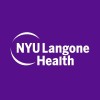
An Efficacy and Safety Study of Rivaroxaban With Warfarin for the Prevention of Stroke and Non-Central...
Atrial FibrillationStroke1 moreThe purpose of this study is to compare the efficacy and safety of rivaroxaban with warfarin for the prevention of blood clots in the brain (referred to as stroke) and blood clots in other parts of the body referred to as non-central nervous system systemic embolism) in patients with non-valvular atrial fibrillation (a heart rhythm disorder).

Moderate Dose Hydroxyurea for Secondary Stroke Prevention in Children With Sickle Cell Disease in...
Sickle Cell DiseaseSickle Cell Anemia1 moreThe overall goal of the proposed study is to determine the effectiveness of hydroxyurea therapy for secondary stroke prevention and prevention of other neurological events in children with SCA with an acute overt stroke.

Hybrid Approach to Unilateral vs. Bilateral Upper Limb Rehabilitation in Subacute and Chronic Stroke...
Cerebrovascular AccidentIn the unilateral vs. bilateral hybrid rehabilitation trials, we will conduct two separate clinical trials: one to recruit subacute stroke patients and another to recruit chronic stroke patients. The two trials will have identical study designs and interventions. The overall goal of this research project is to provide scientific evidence of the treatment effects of unilateral and bilateral hybrid therapies in subacute and chronic stroke patients and thus to contribute to evidence-based stroke rehabilitation and translational research for neurorehabilitation.

Practice-Based Trial of Home BP Telemonitoring Among Minority Stroke Survivors
StrokeHypertensionThis study will assess the comparative effectiveness, cost-effectiveness and sustainability of two telemonitoring interventions in reducing blood pressure and recurrent stroke among 450 high-risk Black and Hispanic stroke patients. The primary hypothesis is that home blood pressure telemonitoring supplemented with individualized, culturally tailored telephone-based nurse case management will have greater effects on blood pressure reduction and stroke recurrence and, while it will be more costly, it will also be more cost-effective than home blood pressure telemonitoring alone. Results of this study will provide strong empirical evidence to inform clinical guidelines and practice, which may lead to reductions in stroke disparities in the United States.

Neuroprotection in Patients Undergoing Aortic Valve Replacement
Aortic StenosisBrain Infarction2 moreTo evaluate the efficacy and safety of embolic protection devices to reduce ischemic brain injury in patients undergoing surgical aortic valve replacement (AVR).

Using Ferumoxytol-Enhanced MRI to Measure Inflammation in Patients With Brain Tumors or Other Conditions...
Brain InjuryCentral Nervous System Degenerative Disorder7 moreThis pilot clinical trial study will assess the inflammatory response of brain tumors or other central nervous system conditions in pediatric and adult patients using ferumoxytol-enhanced MRI. Imaging features will be correlated with the number of inflammatory cells (macrophages) at histopathology. Determining the extent of inflammation associated with pathologies in the central nervous system may be helpful for diagnostic and prognostic purposes as well as monitoring treatment response of current and future immunotherapies.

Tenecteplase Versus Alteplase in Ischemic Stroke Management (TALISMAN)
Ischemic StrokeThis is a double-blind parallel arm randomized trial aimed to assess efficacy and safety of intravenous Tenecteplase compared to intravenous Alteplase in eligible patients who present with symptoms of acute ischemic stroke within 3 to 4.5 hours from onset.

CT or MRI in Work up for i.v. Thrombolysis: a Single-centre Study
Acute StrokeAcute stroke occurs in approximately 13.000 persons every year in Denmark, 10 - 15 % now receives intervenous thrombolytic therapy, which remains the most important acute treatment in ischaemic stroke. For more than a decade there has been an ongoing discussion if Computerized Tomography (CT) or Magnetic Resonance Imaging (MRI) were best before thrombolysis: Magnetic Resonance Imaging is superior in visualising ischaemia, but Computerized Tomography is quicker and more easily applicable. In the investigators centre primary imaging in work up of acute stroke during working hours will alternate between Computerized Tomography and Magnetic Resonance Imaging days based on a fixed calendar for a 24 months period as a quality development project. This study is planned to include patients who have acute stroke imagining during this period, a total of 600 patients is expected. The investigators will compare door-to-needle time, patient safety, quality of imaging, patients' experience, physicians' decision certainty, and use of recourses.

Vibration Stimuli in Stroke Patients With Contraversive Pusher Syndrome
StrokeThe purpose of this study is to investigate the effects of vibration stimuli to contra lateral neck muscles on Contraversive Pusher Syndrome, function and neglect in stroke patients.

Glyburide Advantage in Malignant Edema and Stroke - Remedy Pharmaceuticals
Ischemic StrokeMalignant EdemaThis is a randomized, multi-center, prospective, double blind study. The primary objective is to assess the efficacy and safety of glyburide (RP-1127) compared to placebo in participants with a severe anterior circulation ischemic stroke who are likely to develop malignant edema.This objective will be addressed by comparing the proportion of glyburide treated particpants and placebo treated participants with a Day 90 modified Rankin Scale (mRS) ≤ 4 without decompressive craniectomy (DC). The secondary objective is to assess the efficacy of RP-1127 compared to placebo in participants with a severe anterior circulation ischemic stroke who were likely to develop malignant edema.
